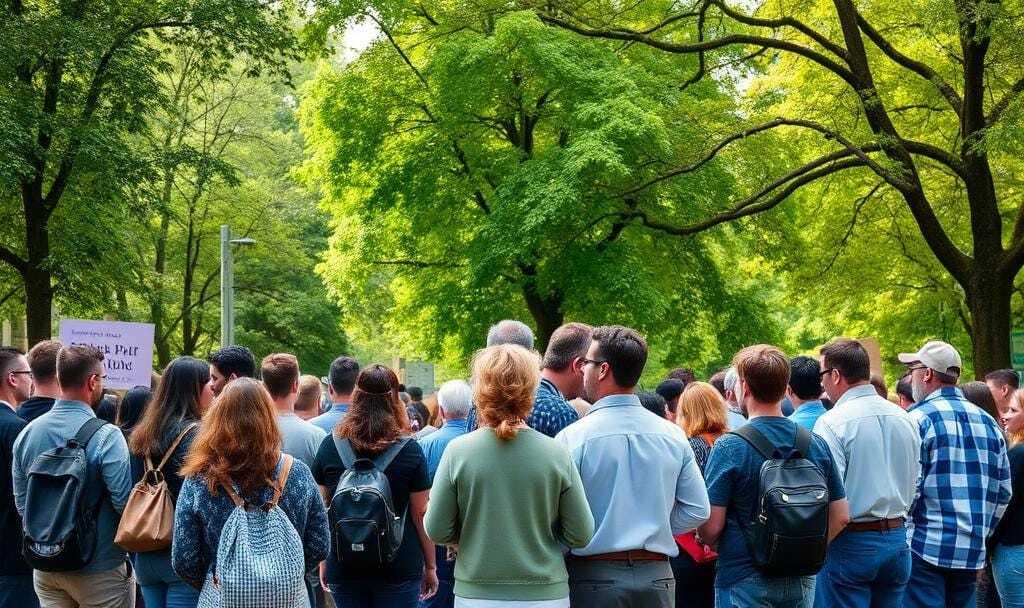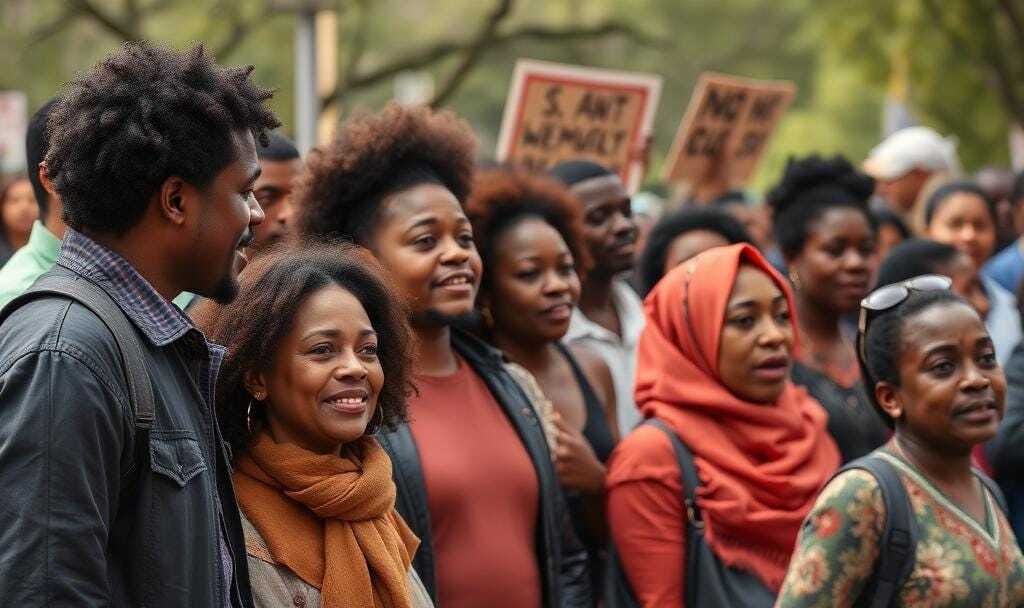The maintenance of security and welfare, traditionally viewed as the sole domain of the state, increasingly relies on the proactive engagement and self-governance of individuals and communities. This paper argues that effective protection—encompassing safety from criminal, environmental, and technological threats—is achieved through a dynamic integration of individual preparedness and robust communal resilience, underpinned by strong social capital. Drawing upon human security frameworks, resilience theory, and concepts of collective efficacy, this study delineates a multi-layered framework for self-protection. It analyzes the specific mechanisms through which individuals enhance their personal security (physical, digital, and psychological) and outlines systematic approaches for communities to build collective defenses, foster mutual aid networks, and strategically collaborate with official authorities. The findings underscore that self-protection is not a retreat from centralized security but an essential, proactive component of a comprehensive societal defense structure.
1. Introduction: The Shift to Citizen-Centric Security

In an era characterized by decentralized threats—ranging from climate change impacts and global pandemics to cybercrime and localized civil unrest—the concept of security has broadened beyond the traditional paradigm of national defense. Modern security frameworks recognize the necessity of Human Security, prioritizing the safety of individuals and their communities [United Nations, 1994]. This shift vests a substantial, though often underappreciated, responsibility upon citizens to actively participate in their own protection and the safeguarding of their immediate environments.
The imperative for self-protection stems from two core realities: the limitations of state capacity during large-scale crises, and the recognition that localized knowledge and social connectivity are the most immediate defenses against everyday threats [Paton & Johnston, 2006].
This paper aims to provide a detailed academic framework addressing the critical question: How must individuals and communities proactively organize and implement strategies to protect themselves and foster collective resilience?
The guiding thesis is that effective self-protection requires a three-pronged approach: the cultivation of individual preparedness (competence and awareness), the strategic building of strong social capital (trust and connectivity), and the implementation of adaptive, threat-specific physical and digital defense protocols.
2. Theoretical Foundations of Self-Protection
The academic grounding for citizen-led protection draws primarily from three intersecting fields: Resilience Theory, Social Capital Theory, and Collective Efficacy.
2.1. Resilience Theory
Resilience, in a socio-ecological context, is defined as the capacity of a system (in this case, an individual or a community) to absorb disturbance, reorganize, and retain essential function following a shock [Adger, 2000]. Individual self-protection builds adaptive capacity—the mental and practical skills necessary to cope with stress and change. Community resilience focuses on transformative capacity—the ability to rebuild smarter, safer, and more equitably after disaster [Pimm, 2011].
2.2. Social Capital Theory

Social capital refers to the networks of relationships among people who live and work in a particular society, enabling that society to function effectively [Putnam, 2000]. In the context of protection, social capital is paramount. Bonding capital (strong ties within homogenous groups, such as family and close neighbors) facilitates immediate mutual aid. Bridging capital (weaker ties connecting different groups, e.g., connecting a neighborhood watch to local police) facilitates access to broader resources and information essential for complex threats. High social capital is strongly correlated with faster disaster recovery rates and lower incidence of localized crime [Sampson, 2012].
2.3. Collective Efficacy
Collective efficacy is the mutual trust among neighbors combined with a shared willingness to intervene for the common good [Sampson, Raudenbush, & Earls, 1997]. This concept moves beyond mere social networking; it describes the actionable commitment a community exhibits toward maintaining order and mitigating risk. In high-efficacy communities, residents are more likely to report suspicious activity, participate in joint clean-up efforts, and enforce informal social norms, thereby acting as a powerful deterrent to disorder and crime.
3. The Imperative of Individual Preparedness
Individual self-protection forms the foundational layer of community resilience. Without skilled, aware, and prepared individuals, collective action fails. Self-protection must address physical, technological, and psychological domains.
3.1. Physical and Situational Awareness
Individuals must cultivate situational awareness—an understanding of the immediate environment and the potential threats it poses [Endsley, 1995]. This involves moving away from passive observation to active assessment of potential risks (e.g., unusual human behavior, structural weaknesses, escape routes).
Practical physical preparedness involves:

Risk Assessment: Identifying personal vulnerabilities based on location, travel patterns, and occupation.
Basic Life Support and First Aid: Acquiring essential medical skills to triage and treat immediate injuries before professional help arrives.
Emergency Supplies: Maintaining disaster preparation kits (”go-bags”) capable of supporting the individual and family for a minimum of 72 hours, ensuring autonomy during immediate response phases.
3.2. Digital Security and Cyber Hygiene
Modern community life is increasingly mediated by digital infrastructure. Individual self-protection must extend into the cyber realm to protect against fraud, identity theft, and data breaches which can cripple personal and community resources. Essential practices include strong password management, multi-factor authentication, and critical assessment of information sources to combat disinformation that can lead to panic or misplaced resource allocation during crises.
3.3. Psychological Resilience
Perhaps the most overlooked component is psychological robustness. Self-protection requires the individual to manage the emotional shock inherent in threatening situations. Stress inoculation training—the process of mentally simulating crisis scenarios—can help mitigate the paralyzing effects of fear, ensuring that individuals can execute previously planned responses under duress [Meichenbaum, 1993]. A resilient individual maintains emotional regulation, enabling rational decision-making for both themselves and those dependent on them.
4. Mechanisms for Community Collective Protection
Community self-protection transitions the defensive posture from individual households to the collective neighborhood, creating shared governance and mutual dependency.
4.1. Building Social Infrastructure
The primary task of community protection is the conscious development of social capital and collective efficacy.
Strategy Goal Mechanism
Mapping Assets and Vulnerabilities Identifying skills, resources, and dependent populations (e.g., elderly, disabled). Neighborhood surveys; Skill registries (e.g., residents with medical, engineering, or communication expertise).
Establishing Formal Communication Chains Ensuring rapid, reliable dissemination of information during crisis. Implementing agreed-upon communication platforms (e.g., secure group chats, amateur radio networks) separate from potentially compromised public infrastructure.
Mutual Aid Networks Formalizing processes for resource sharing and immediate assistance. Creating block-by-block networks where neighbors agree to check on specific households during emergencies (the “buddy system”).
4.2. Crime Prevention Through Environmental Design (CPTED)

Communities must actively shape their physical environment to deter criminal activity and enhance public safety. CPTED principles emphasize that the proper design and use of the built environment can reduce the incidence and fear of crime [Jeffery, 1971; Crowe, 2000]. Strategies include:
Natural Surveillance: Ensuring clear sightlines and adequate lighting to maximize visibility of public spaces.
Territorial Reinforcement: Using physical features (fences, landscaping, community signs) to define private and semi-private spaces, communicating ownership and encouraging residents to act as guardians.
Access Control: Directing people along desired paths and restricting access to high-risk areas (e.g., locking community gates, managing building entrances).
4.3. Strategic Partnership with Authorities
Community self-protection is not a substitute for state law enforcement or emergency services, but a vital supplementation. Effective protection relies on a cooperative dynamic where communities act as partners, providing localized intelligence and initial response capacity.
Programs such as Neighborhood Watch or Community Emergency Response Teams (CERT) formalize this partnership, providing citizens with standardized training (e.g., fire safety, light search and rescue) that ensures their actions are coordinated, safe, and effective when operating alongside professional responders. The goal is responsible autonomy, minimizing the strain on external resources.
5. The Framework of Continuous Protection: Preparation, Response, Recovery (P-R-R)
Self-protection is not a static state but a cyclical process requiring continuous engagement across three phases:
5.1. Preparation
Preparation is the proactive phase where risk mitigation occurs. It requires a shared, realistic risk assessment of the community’s specific vulnerabilities (e.g., flood zones, proximity to industrial hazards, history of crime).
Drills and Exercises: Regular simulation of disaster scenarios (fire, severe weather, power outage) to test communication systems and individual response plans. Consistent training reinforces competence and transforms knowledge into reflexive action.
Resource Mapping: Identifying and securing crucial supplies, including caches of tools, food, water, and specialized equipment stored communally or decentralized among trusted leaders.
Legal Clarity: Understanding local regulations regarding self-defense, mutual aid, and emergency communications to ensure actions taken during response are lawful and protected.
5.2. Response
The response phase involves the immediate actions taken to protect life and minimize further damage following an event.
Decentralized Leadership: In the immediate aftermath, state structures often fail. Communities must rely on pre-identified, trained leaders to coordinate efforts until official response arrives. This minimizes the “bystander effect” and ensures prompt action.
Prioritization: Collective effort must prioritize life safety, medical triage, securing critical infrastructure (e.g., gas lines, electrical hazards), and establishing internal security perimeters if necessary.
Verification and Communication: Disseminating verified information and actively countering rumors or misdirection which can undermine the collective response.
5.3. Recovery and Adaptive Learning
The long-term recovery phase is crucial for rebuilding resilience. It involves analyzing the effectiveness of the initial response and adapting future plans.
Psychosocial Support: Organizing resources for mental health services to address community trauma and stress, a critical but often neglected aspect of recovery.
Debriefing and Documentation: Conducting formal reviews of the response to identify failures in preparation, communication, or execution. This data must inform actionable improvements in training and resource allocation.
Policy Advocacy: Using the lessons learned to advocate for local policy changes (zoning laws, infrastructure upgrades) that minimize future vulnerability, transforming a temporary shock into a durable policy change.
6.
The demand for comprehensive self-protection strategies for individuals and communities is a definitive feature of the modern security landscape. Security can no longer be outsourced solely to state institutions; it is a shared responsibility demanding citizen competence, commitment, and strategic cooperation.
The framework presented—integrating individual preparedness with the cultivation of robust social capital and systematic defense protocols—demonstrates that true resilience is fostered through active participation and collective efficacy. By investing in psychological toughness, physical preparedness, and the organizational structure of mutual aid, people can transition from being passive recipients of security to active producers of safety, ensuring the swift survival and durable prosperity of their communities in the face of inevitable challenges. Future research should focus on quantifying the relationship between specific digital preparedness strategies and community post-disaster recovery timelines.
References
Adger, W. N. (2000). Social and ecological resilience: Are they related? Progress in Human Geography, 24(3), 347–364.
Crowe, T. D. (2000). Crime Prevention Through Environmental Design: Applications of Architectural Design and Space Management Concepts. Butterworth-Heinemann.
Endsley, M. R. (1995). Toward a theory of situational awareness in dynamic systems. Human Factors, 37(1), 32–64.
Jeffery, C. R. (1971). Crime Prevention Through Environmental Design. Sage Publications.
Meichenbaum, D. (1993). Stress inoculation training: A 20-year review. In P. M. Lehrer & R. L. Woolfolk (Eds.), Principles and Practice of Stress Management (2nd ed., pp. 373–404). Guilford Press.
Paton, D., & Johnston, D. (2006). Disaster Resilience: An integrated Approach. Charles C. Thomas Publisher.
Pimm, S. L. (2011). The Balance of Nature? Ecological Issues in the Conservation of Species and Communities. University of Chicago Press.
Putnam, R. D. (2000). Bowling Alone: The Collapse and Revival of American Community. Simon & Schuster.
Sampson, R. J. (2012). Great American City: Chicago and the Enduring Neighborhood Effect. University of Chicago Press.
Sampson, R. J., Raudenbush, S. W., & Earls, F. (1997). Neighborhoods and violent crime: A multilevel study of collective efficacy. Science, 277(5328), 918–924.
United Nations. (1994). Human Development Report 1994: New Dimensions of Human Security. United Nations Development Programme.
